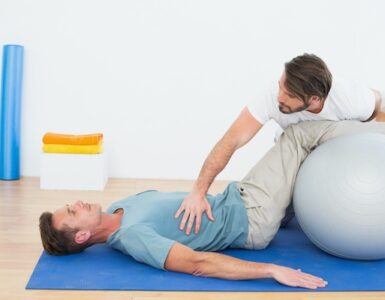Varicose veins can be a source of discomfort and insecurity for many people. These twisted, swollen veins that typically appear on the legs are a common problem, but there’s a lot more to them than meets the eye. In this article, we’ll explore the top 10 facts you should know about Varicosil veins, from what causes them to how to prevent and treat them.
1. What Are Varicose Veins?
Varicose veins are enlarged, swollen, and twisted veins that often appear blue or dark purple. They are most commonly found in the legs, as this is where blood flow is against gravity, making them more prone to issues. Varicose veins occur when the one-way valves in the veins become weak or damaged, causing blood to pool in the veins and creating the characteristic bulging appearance.
2. Who Is at Risk?
Varicose veins can affect anyone, but certain factors increase the risk. These include genetics, as a family history of varicose veins makes you more likely to develop them. Age is also a risk factor, as the risk increases as you get older. Other factors such as obesity, pregnancy, and a sedentary lifestyle can also contribute.
3. Symptoms of Varicose Veins
Not everyone with varicose veins experiences symptoms, but when they do, common signs include:
- Pain or aching in the affected area
- Swelling, especially after long periods of standing
- Itching or burning
- Cramping or a feeling of heaviness in the legs
4. Serious Complications
While varicose veins are often viewed as a cosmetic concern, they can lead to more serious complications if left untreated. These include skin changes, such as darkening or inflammation, and the development of painful ulcers on the skin near the veins. In severe cases, blood clots can form, leading to deep vein thrombosis.
5. Diagnosis
If you suspect you have varicose veins, it’s essential to consult a healthcare professional. They can diagnose the condition through a physical examination, and in some cases, they may recommend an ultrasound to get a more detailed view of the affected veins.
6. Prevention
Preventing varicose veins involves lifestyle changes, such as maintaining a healthy weight, staying physically active, and avoiding prolonged periods of standing or sitting. Compression stockings can also help improve blood flow and reduce the risk of varicose veins.
7. Treatment Options
If you already have varicose veins, various treatment options are available. These include:
- Sclerotherapy: A common treatment where a special solution is injected into the vein, causing it to collapse and fade.
- Endovenous Laser Ablation (EVLA): This procedure uses laser energy to seal off the affected vein.
- Radiofrequency Closure: It involves the use of radiofrequency energy to heat and close the vein.
- Surgery: In severe cases, surgical removal of the affected veins may be necessary.
8. Lifestyle Adjustments
In addition to medical treatments, making lifestyle adjustments can help manage varicose veins. Elevating your legs when resting, avoiding crossing your legs, and wearing compression stockings are all strategies that can alleviate symptoms and improve blood flow.
9. Herbal and Home Remedies
Some natural remedies and supplements are believed to help with varicose veins. These include horse chestnut extract, grape seed extract, and witch hazel. However, always consult with a healthcare professional before trying these remedies.
10. Consult a Specialist
If you have varicose veins or are concerned about your risk, it’s essential to consult a vascular specialist or a healthcare professional with expertise in vein disorders. They can provide you with the most accurate information and recommend the best treatment options tailored to your specific situation.
Conclusion
varicose veins are a common condition that can affect anyone. Understanding the risk factors, symptoms, and treatment options is crucial for maintaining good vascular health. By making lifestyle adjustments and seeking professional advice, you can manage varicose veins effectively and improve your quality of life. Remember, it’s not just about appearance; it’s about your overall well-being.





Add comment